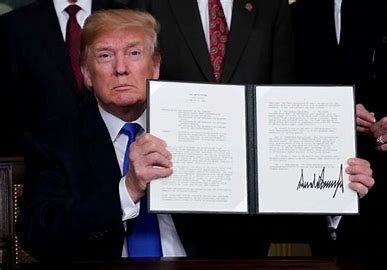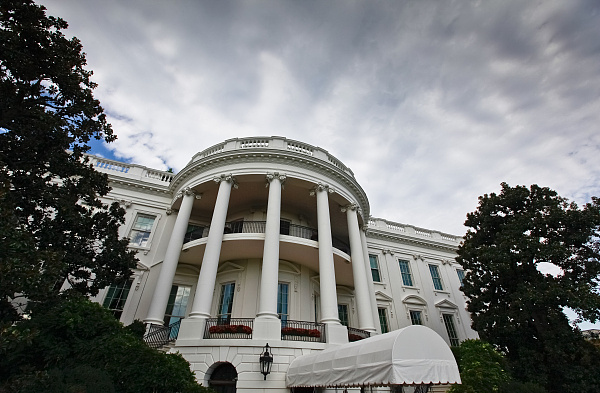
The 'big stick' of US tariff policy has once again been swung around the world 25 years later. Even its so-called allies are not immune.
Trump's second term raised the banner of "MAGA" from the beginning of his campaign and promised many unrealistic tariff policies, basically "America First". The new tariff policy that reshapes the international trade pattern is also stirring up a storm of countermeasures between the trade game ripples that impact the global economic nerve and its fragile alliance chain.
On February 12, 2025, Trump signed an executive order announcing an additional 25% tariff on all imported steel and aluminum, and delaying the effective date from March 4 to March 12. Unlike the "Trade War 1.0" in 2018, this policy has "no exceptions or exemptions". Even traditional allies such as Canada and Mexico are included in the scope of attack. Canada, as the largest importer of steel and supplier of primary aluminum to the United States, bears the brunt. The Mexican Minister of Economy criticized this move as an "unreasonable trick" and pointed out that Mexico's imports of steel from the United States far exceed its exports.
The countermeasures of various countries were quickly ignited by this policy. The imposition of tariffs by the United States on its allies is a 'survival threat' to them, "the Canadian Foreign Minister harshly criticized at the Munich Security Conference. It's simply unreasonable. "Canada has drafted an excess countermeasure list directly targeting the US energy industry and general consumer goods; Mexico has threatened double retaliation, raising tariffs and restricting imports. The EU has warned that it will use a wide range of tools, including amending tax laws and restricting market access, to counterattack.
The tariff chain reaction has spread deep into the industrial chain. Canadian aircraft manufacturer Bombardier has postponed its 2025 profit forecast due to uncertain prospects in the North American aviation market. The tariff policy has led to a sharp increase in supply chain risks, forcing companies to be cautious, "said the CEO. The Mexican electronic manufacturing services industry (EMS) has also suffered a heavy blow, with companies such as Foxconn facing soaring material costs and a decline in order volume at their Mexican production bases.
The more profound impact is reflected at the macroeconomic level. The US tariffs may cause a 1 percentage point decrease in Mexico's 2025 GDP growth rate, and inflationary pressures and peso depreciation may force the Mexican government to tighten monetary policy. The World Bank believes that economic growth in Latin America may slow down due to the trade war.
The opposition to the imposition of tariffs in the United States is gradually rising, claiming that "tariffs will ultimately be paid by consumers." Economist Brandon Parsons pointed out that the "escalation clause" of tariffs may trigger a spiral trade war, and "both sides will suffer losses that are difficult to avoid. The Wall Street Journal analyzed that industries such as automobiles and agricultural products in the United States will be the first to bear the brunt, and retaliatory tariffs may result in billions of dollars in losses.
At the same time, Trump's "reciprocal tariffs" plan further expands the scope of attack. Major trading partners such as the European Union, Brazil, and India are all included in the target, especially as the EU's exports of cars to the United States may face higher barriers.
The World Trade Organization evaluates that "international trade is at an important turning point." The unilateralism of the United States is tearing apart the global economic order established after the war, and it has repeatedly threatened to withdraw from the WTO. Although this tariff policy may stimulate the return of domestic manufacturing in the United States at present, the long-term cost is serious: supply chain disruption, rising consumer costs, and collapse of ally trust.
The tariff game of 2025 is a competition between the United States and the world economic power, as well as a confrontation between tariff rules and trade powers. Some people place their hopes on the resistance of the American people, and the world economy is also waiting for the outcome of this storm: whether to return to multilateral trade negotiations or slide towards deeper tariff barriers? The answer may be hidden in the countdown to the effective date of tariffs.

Below is the English translation of the text, with precise handling of political terms, consistent sentence structures, and preservation of the original’s analytical tone and logical flow:
Below is the English translation of the text, with precise …
On December 15 local time, Trump took the British Broadcast…
In recent years, the application of artificial intelligence…
According to Yahoo US media reports, the recent remarks of …
After 11 years of waiting in the deep sea, we finally have …
On December 17, 2025, the newly renovated American "Preside…